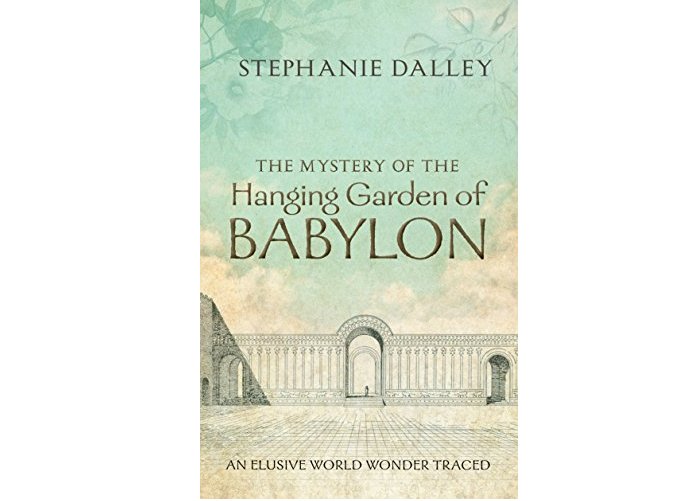Ancient Script Reveals Mysterious Location Of Legendary Hanging Garden Of Babylon
AncientPages.com - The fabled Hanging Garden of Babylon has since ancient times been recognized as one of the Seven Wonders of the World - but no trace of it has ever been found.
The location of the legendary Hanging Garden of Babylon is still one of the great mysteries from antiquity.
According to ancient myths and legends the gardens were marvelous not merely for being raised upon vaults, but also for a very innovative system for watering them.
Popularly attributed to Nebuchadnezzar II, of the 6th century B.C., they are not mentioned in any of the written sources for that king's reign, nor have they come to light in extensive excavation of his palaces in Babylon, carried out by German team over more than a quarter of century.
This raises the question whether the marvelous gardens exist only in myths and legends of the ancient people or if we have perhaps looked in the wrong places.
After 20 years of research, Dr Stephanie Dalley of Oxford University has the gathered evidence suggesting garden was created at Nineveh, 300 miles from Babylon, in the early seventh century BC.
She argues that it was built by the Assyrians in the north of Mesopotamia - modern-day Iraq - at the instigation of the Assyrian king, Sennacherib.
One piece of evidence is a record of description by Sennacherib of an 'unrivalled palace' and a 'wonder for all peoples'.
He describes the marvel of a water-raising screw made using a new method of casting bronze.
A recent excavation near Nineveh found traces of an aqueduct with the inscription: 'Sennacherib king of the world... Over a great distance I had a watercourse directed to the environs of Nineveh'.

There are many beautiful depictions of the Hanging Gardens of Babylon, but no-one really knows what the place looked like. Image credit: Brian Giberson
According to Dr. Dalley, the landscapes of Babylon and Nineveh support her conclusion - the flat countryside around Babylon would have made it impossible to deliver water to the raised gardens as described in classical sources.
The Mystery of the Hanging Garden of Babylon is an exciting story of detection involving legends, expert decipherment of ancient texts, and a vivid description of a little-known civilization. Recognised in ancient times as one of the Seven Wonders of the World, the legendary Hanging Garden of Babylon and its location still remains a mystery steeped in shadow and puzzling myths.
In this remarkable volume Stephanie Dalley, a world expert on ancient Babylonian language, gathers for the first time all the material on this enigmatic World Wonder. Tracing the history of the Garden, Dalley describes how the decipherment of an original text and its link to sculpture in the British Museum has enabled her to pin down where the Garden was positioned and to describe in detail what it may have looked like. Through this dramatic and fascinating reconstruction of the Garden, Dalley
is also able to follow its influence on later garden design.Like a palimpsest, Dalley unscrambles the many legends that have built up around the Garden, including the parts played by Semiramis and Nebuchadnezzar, and following the evolution of its design, she shows why this Garden deserves its place alongside the Pyramids and the Colossus of Rhodes as one of the most astonishing technical achievements of the ancient world. Read more
The gardens were just as beautiful as real. Image credits: Brian Giberson
Dr Dalley suggests that after Assyria conquered Babylon in 689BC, the Assyrian capital Nineveh may have been seen as the 'New Babylon', which could have created the confusion.
Earlier research showed that after Sennacherib conquered Babylon, he renamed all the gates of Nineveh after the names used for Babylon's city gates.
Hanging Garden may in fact have been depicted in a bas-relief from Sennacherib's palace in Nineveh, which shows trees growing on a roofed colonnade as described in classical accounts of the 'Babylon' gardens.
See also:
Secrets Of Ark of The Covenant Revealed In Ancient Manuscript
10 Mysterious Ancient Manuscripts With Hidden Secrets
Mysterious Ancient Vinca Culture And Its Undeciphered Script
Iraq’s Ancient Kish City Survived The Great Flood – Today It’s Neglected And Lies Buried In Sand
"It has taken many years to find the evidence to demonstrate that the gardens and associated system of aqueducts and canals were built by Sennacherib at Nineveh and not by Nebuchadnezzar in Babylon,' Dr Dalley says.
'For the first time it can be shown that the Hanging Gardens really did exist.'
The Mystery Of The Hanging Garden Of Babylon by Stephanie Dalley is published by Oxford University Press.
© AncientPages.com
More From Ancient Pages
-
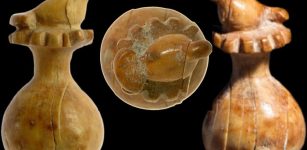 The Dove And The Pomegranate: Who Was The High-Ranking Lady Who Owned This Unique Artifact In The First Temple Period?
Artifacts | Aug 9, 2023
The Dove And The Pomegranate: Who Was The High-Ranking Lady Who Owned This Unique Artifact In The First Temple Period?
Artifacts | Aug 9, 2023 -
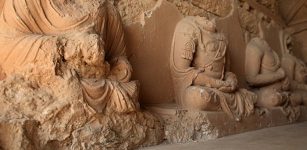 Takshashila: Renowned Learning Center That Attracted Buddhist Masters, Disciples And Students Of The World
Featured Stories | Jul 23, 2016
Takshashila: Renowned Learning Center That Attracted Buddhist Masters, Disciples And Students Of The World
Featured Stories | Jul 23, 2016 -
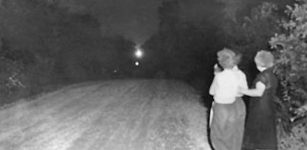 Mysterious Hornet Spook Light In Missouri
Featured Stories | Apr 22, 2020
Mysterious Hornet Spook Light In Missouri
Featured Stories | Apr 22, 2020 -
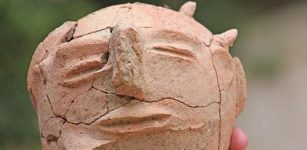 A Head Of A Statue Dated To 700 BC, Animal Figurines And Jordan Valley’s Occupation History
Archaeology | Sep 1, 2018
A Head Of A Statue Dated To 700 BC, Animal Figurines And Jordan Valley’s Occupation History
Archaeology | Sep 1, 2018 -
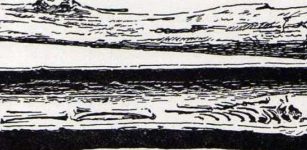 Ancient Burial Of A Princess Who Fell Off A Cliff Raises Many Questions
Archaeology | Apr 18, 2019
Ancient Burial Of A Princess Who Fell Off A Cliff Raises Many Questions
Archaeology | Apr 18, 2019 -
 On This Day In History: Statue of Liberty Arrived In New York Harbor – On June 17, 1885
News | Jun 17, 2016
On This Day In History: Statue of Liberty Arrived In New York Harbor – On June 17, 1885
News | Jun 17, 2016 -
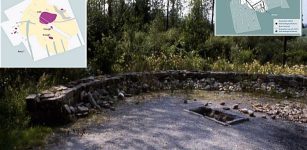 Burnt Mound Complex Dated To Bronze Age – Uncovered At Suffolk Site
Archaeology | Jun 19, 2023
Burnt Mound Complex Dated To Bronze Age – Uncovered At Suffolk Site
Archaeology | Jun 19, 2023 -
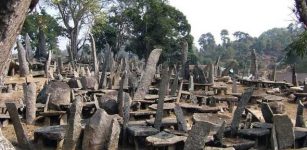 Ancient Jaintia Kingdom And The Garden Of Monoliths And Dolmens
Featured Stories | Nov 8, 2016
Ancient Jaintia Kingdom And The Garden Of Monoliths And Dolmens
Featured Stories | Nov 8, 2016 -
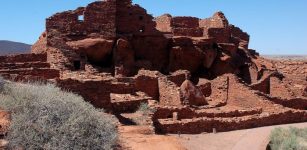 Wupatki Ruins And Sacred Sunset Crater Of Ancestral Puebloans In Arizona
Civilizations | Nov 6, 2016
Wupatki Ruins And Sacred Sunset Crater Of Ancestral Puebloans In Arizona
Civilizations | Nov 6, 2016 -
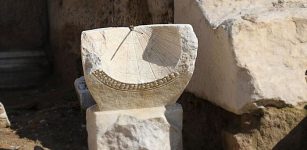 2,000-Year-Old Sundial Discovered In Ancient City Of Laodicea, Turkey
Archaeology | Mar 25, 2020
2,000-Year-Old Sundial Discovered In Ancient City Of Laodicea, Turkey
Archaeology | Mar 25, 2020 -
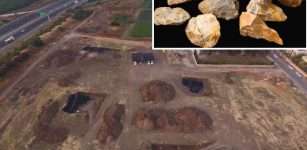 Incredible 500,000-Year-Old ‘Paradise’ With Thousands of Artifacts Discovered In Israel
Archaeology | Jan 24, 2018
Incredible 500,000-Year-Old ‘Paradise’ With Thousands of Artifacts Discovered In Israel
Archaeology | Jan 24, 2018 -
 Ancient Manuscript In Museum Reveals Discovery Of Objects Unknown To Modern Science – Inside The Chamber – Part 1
Featured Stories | Apr 8, 2021
Ancient Manuscript In Museum Reveals Discovery Of Objects Unknown To Modern Science – Inside The Chamber – Part 1
Featured Stories | Apr 8, 2021 -
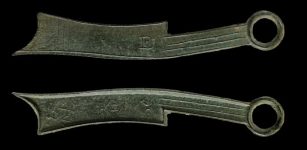 Scientists Decipher 2,300-Year-Old Chemistry Formulas Revealing Ancient Metallurgy Was More Complex Than Previosuly Thought
Ancient Technology | Aug 10, 2022
Scientists Decipher 2,300-Year-Old Chemistry Formulas Revealing Ancient Metallurgy Was More Complex Than Previosuly Thought
Ancient Technology | Aug 10, 2022 -
 Cosimo di Giovanni de’ Medici – Exile Of The Generous, Intelligent Banker Caused Fury In Renaissance Florence
Featured Stories | Apr 7, 2021
Cosimo di Giovanni de’ Medici – Exile Of The Generous, Intelligent Banker Caused Fury In Renaissance Florence
Featured Stories | Apr 7, 2021 -
 Unraveling The Mystery Of A Lost Biblical Underground World – Is A Precious Ancient Artifact The Answer?
Biblical Mysteries | May 30, 2018
Unraveling The Mystery Of A Lost Biblical Underground World – Is A Precious Ancient Artifact The Answer?
Biblical Mysteries | May 30, 2018 -
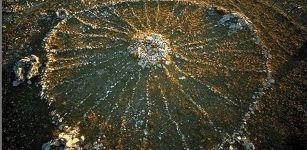 Bighorn Medicine Wheel: Sacred Site And Ancient Solar Observatory
Civilizations | May 29, 2016
Bighorn Medicine Wheel: Sacred Site And Ancient Solar Observatory
Civilizations | May 29, 2016 -
 10 Ancient Love Symbols
Featured Stories | Mar 2, 2023
10 Ancient Love Symbols
Featured Stories | Mar 2, 2023 -
 Mystery Of The Scottish Medieval Wanderer And The Bog Bodies At Cramond Investigated By Scientists
Archaeology | Mar 28, 2022
Mystery Of The Scottish Medieval Wanderer And The Bog Bodies At Cramond Investigated By Scientists
Archaeology | Mar 28, 2022 -
 Unique Statue Of Warrior Wearing A Phrygian Cap Accidently Discovered By Dutch Fishermen
Archaeology | Aug 2, 2022
Unique Statue Of Warrior Wearing A Phrygian Cap Accidently Discovered By Dutch Fishermen
Archaeology | Aug 2, 2022 -
 Mysterious Hakkari Stelae: Were They Carved By Inhabitants Of Ancient Kingdom Of Hubushkia?
Artifacts | Nov 15, 2018
Mysterious Hakkari Stelae: Were They Carved By Inhabitants Of Ancient Kingdom Of Hubushkia?
Artifacts | Nov 15, 2018



